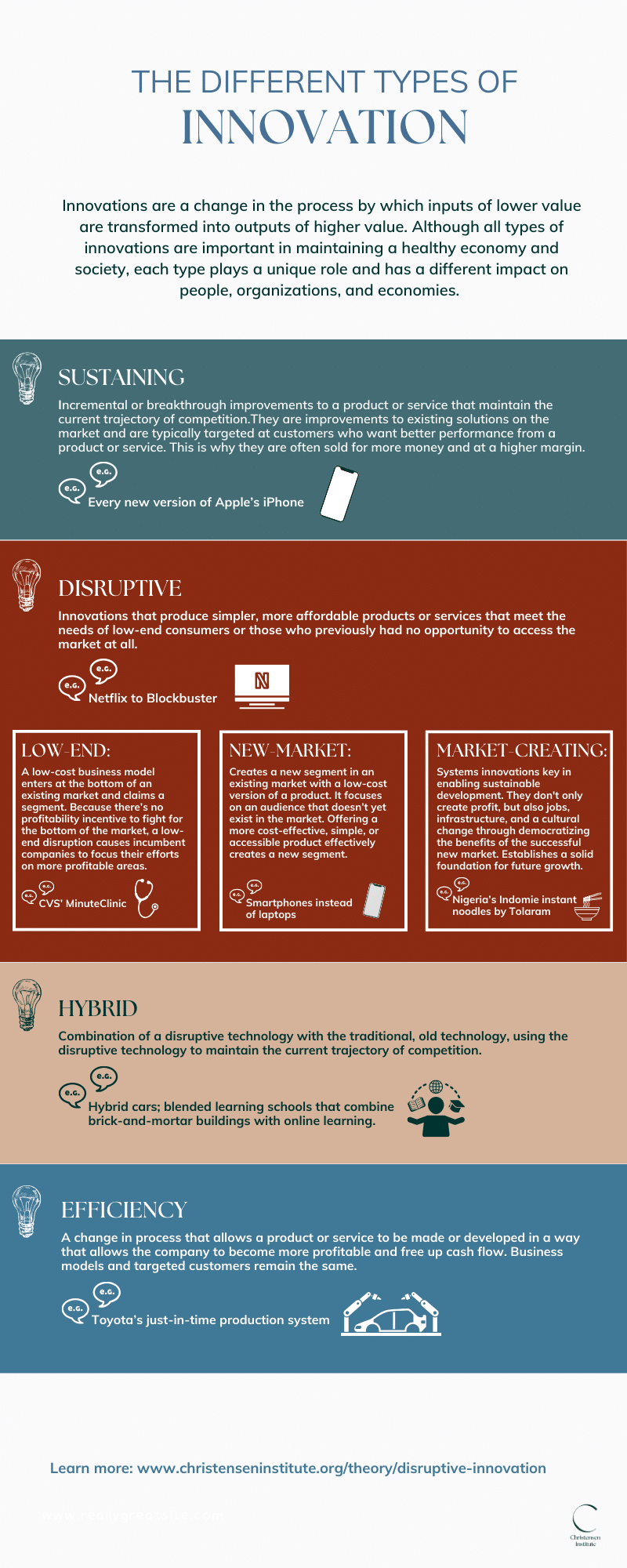Infographic: The different types of innovation
Innovations are a change in the process by which inputs of lower value are transformed into outputs of higher value. Although all types of innovations are important in maintaining a healthy economy and society, each type plays a unique role and has a different impact on people, organizations, and economies.
Sustaining
Incremental or breakthrough improvements to a product or service that maintain the current trajectory of competition.They are improvements to existing solutions on the market and are typically targeted at customers who want better performance from a product or service. This is why they are often sold for more money and at a higher margin.
Example: Every new version of Apple’s iPhone
Disruptive
Innovations that produce simpler, more affordable products or services that meet the needs of low-end consumers or those who previously had no opportunity to access the market at all.
Example: Netflix to Blockbuster
- Low-end: A low-cost business model enters at the bottom of an existing market and claims a segment. Because there’s no profitability incentive to fight for the bottom of the market, a low-end disruption causes incumbent companies to focus their efforts on more profitable areas. Example: CVS’ MinuteClinic
- New-market: Creates a new segment in an existing market with a low-cost version of a product. It focuses on an audience that doesn’t yet exist in the market. Offering a more cost-effective, simple, or accessible product effectively creates a new segment. Example: Smartphones instead of laptops
- Market-creating: Systems innovations key in enabling sustainable development. They don’t only create profit, but also jobs, infrastructure, and a cultural change through democratizing the benefits of the successful new market. Establishes a solid foundation for future growth. Example: Nigeria’s Indomie instant noodles by Tolaram
Hybrid
Combination of a disruptive technology with the traditional, old technology, using the disruptive technology to maintain the current trajectory of competition.
Examples: Hybrid cars; blended learning schools that combine brick-and-mortar buildings with online learning.
Efficiency
A change in process that allows a product or service to be made or developed in a way that allows the company to become more profitable and free up cash flow. Business models and targeted customers remain the same.
Example: Toyota’s just-in-time production system
Learn more: www.christenseninstitute.org/theory/disruptive-innovation


